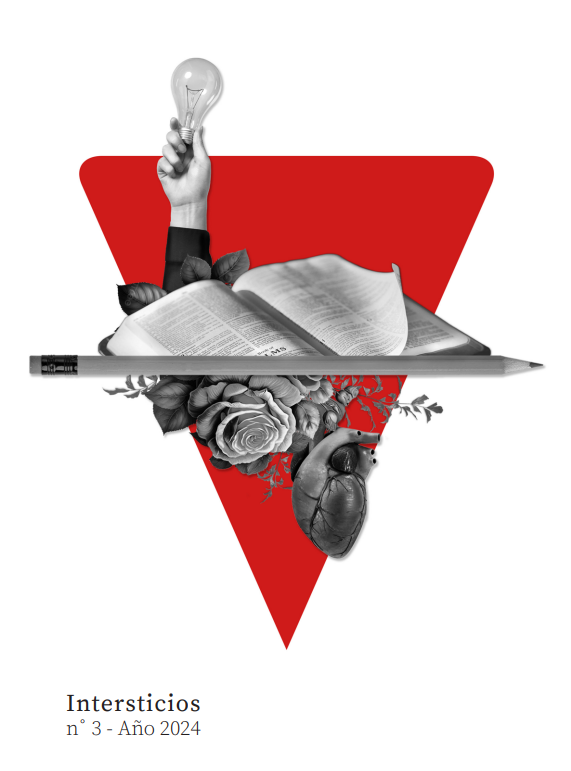El periodismo visto desde la sistémica y la teoría del actor-red
Abstract
Journalistic work can be analyzed from different angles and applying different methods. The points of view of systems theory and actor-network theory have been chosen here and it is shown how both are related and complement each other. It is briefly explained what each one consists of and then it is explained the usefulness of each one. Then we move on to consider the context of journalistic work, before analyzing the “press” system. Subsequently, the role of the press editor, the journalist-reporter, and the users-recipients are analyzed in more detail and the role of the instruments used and their effects are addressed.
Downloads
References
Carr, N. (2010). Superficiales: ¿qué está haciendo Internet a nuestros cerebros? Tauros.
Castells, M. (2000). La era de la información, Vol.1: La sociedad red. Alianza.
Chávez, C. y Lagos, C. (2024). Los que están en los diarios pueden desaparecer. El cierre de Télam en Argentina. CIPER Chile. https://www.ciperchile.cl/2024/05/17/los-que-estan-en-los-diarios-pueden-desaparecer-el-cierre-de-telam-en-argentina/
Colle, R. (2022). Sistémica del periodismo. Revista Mediterránea de Comunicación, 19. https://rua.ua.es/dspace/bitstream/10045/121005/1/CMD_19_Sistemica_del_periodismo.pdf
——— (2019). Los contenidos de los medios digitales. INCOM Chile. http://incomchile.cl/wp-content/uploads/2019/03/Contenidos-digitales.pdf
——— (2016). Sistémica de los medios de comunicación. INCOM Chile. http://incomchile.cl/wp-content/uploads/2012/03/sistemica_medios2.pdf
——— (2002). Teoría cognitiva sistémica de la comunicación. Ed. San Pablo. [Versión PDF pre imprenta en Academia.edu] https://www.academia.edu/25730005/TEORIA_COGNITIVA_SISTEMICA_DE_LA_COMUNICACION
Dretske, F. (1989). Conocimiento e información. Salvat.
El impacto del video 360 en la publicidad y el marketing digital: tendencias y ejemplos (s.f.). Two Reality. https://www.tworeality.com/el-impacto-del-video-360-en-la-publicidad-y-el-marketing-digital-tendencias-y-ejemplos/
Floridi, L. (1999). Philosophy and Computing: An Introduction. Routledge.
Hernández-Santaolalla, V. (2018). Los efectos de los medios de comunicación de masas. UOC.
Kukso, F. (2024). Vivir y morir online: Internet ha cambiado para siempre nuestra relación con la Muerte. Agencia Sinc. https://www.agenciasinc.es/Reportajes/Vivir-y-morir-online-Internet-ha-cambiado-para-siempre-nuestra-relacion-con-la-muerte
Latour, B. (2008). Reensamblar lo social: Una introducción a la teoría del actor–red. Manantial. http://dss–edit.com/plu/Latour_Reassembling.pdf
——— (2010). Avoir ou ne pas avoir de réseau: that’s the question, en M. Akrich et al., Débordements. Mélanges offerts à Michel Callon (pp. 257-268). Presses de l’Ecole des Mines.
Le Moigne, J. L. (1994 [1977]). La théorie du système general. PUF, 4.a edición
Maher, T. (2024, 15 de mayo). Technology is probably changing us for the worse—or so we always think, MIT Technology Review. https://www.technologyreview.com/2024/05/15/1092350/technology-is-probably-changing-us-for-the-worse-or-so-we-always-think/
Marín, C. (2003). Manual de periodismo. Grijalbo.
McLuhan, M. y Fiore, Q. (1969). El medio es el masaje. Un inventario de efectos. Paidos. https://monoskop.org/images/9/9a/McLuhan_Marshall_Fiore_Quentin_El_medio_es_el_masaje_Un_inventario_de_efectos.pdf
Pedriza, S. B. (2019). Medios impresos versus digitales: de la agónica lectura de periódicos a los nuevos consumos de información digital. El Argonauta español, 16.
Scolari, C. (2023). Sobre la evolución de los medios. Ampersand.
Shannon, C. y Weaver, W. (1981). Teoría matemática de la comunicación. Forja.
Sisto, D. (2022). Posteridades Digitales. Inmortalidad, memoria y luto en la era de Internet. Katz Editores.
Wolton, D. (2000). Internet ¿y después? Una teoría crítica de los nuevos medios de comunicación. Portic.
Copyright (c) 2024 Intersticios

This work is licensed under a Creative Commons Attribution-NonCommercial-ShareAlike 4.0 International License.






